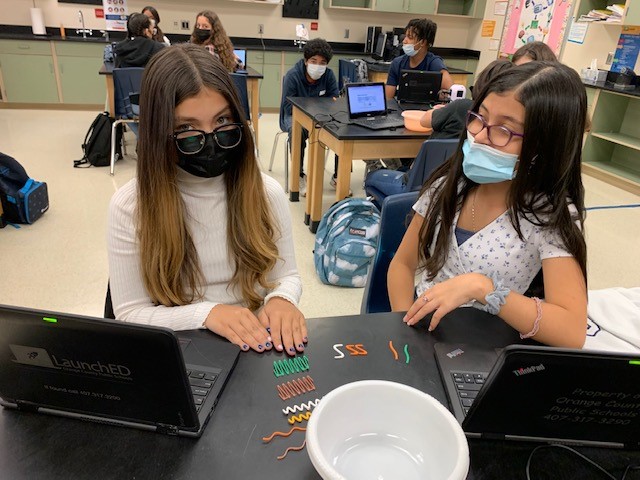
Meredith Williams, an 8th grade science teacher at Freedom Middle School (Orlando, FL), specializes in integrating MimioSTEM solutions in her science instruction. To encourage her students to think critically and creatively about problems through science exploration, Williams incorporates a variety of 3D-printed manipulatives, so her students have something hands-on to observe, analyze, and form ideas around. Williams also regularly implements and provides feedback on MyStemKits lessons and activities, which she uses in conjunction with her 3D printer. This year, she’ll share her and her students’ experiences using the standards driven MyStemKits curriculum. This lesson will focus on waves.
Types of Waves and Their Properties
STEM Supplies:
- MyStemKits Waves Kit
- 3D printer to print ‘waves’ manipulatives
- Bowls or similar container
- Paper, pencils
Grade level: 8
Objectives: Students will --
- identify and explain different properties of waves.
- recognize and discuss two different types of waves.
Time frame: one class period (approximately 45 minutes)
Supplies per group of 3-4 students
- Bowls with a variety of 3D printed waves manipulatives
- Paper, pencils

Lesson description
In Florida, students in 5th and 8th grades participate in the Statewide Science Assessment which is based on the Next Generation Sunshine State Standards. To help ease some of the stress that goes along with tests, every Friday is ‘Review Day,’ and we choose a topic to revisit. Typically, reviews involve hands-on lessons to help students remember topics learned in earlier grades.
This Waves lesson combines knowledge from 7th and 8th grade standards, specifically:
- SC.7.P.10.3 Recognize that light waves, sound waves, and other waves move at different speeds in different materials.
- SC.7.P.10.2 Observe and explain that light can be reflected, refracted and or absorbed.
- SC.8.E.5.11 Identify and compare characteristics of the electromagnetic spectrum such as wavelength, frequency, use, and hazards and recognize its application to an understanding of planetary images and satellite photographs
In the 8th grade, we teach students about transverse waves when discussing technology in space and solar properties with the electromagnetic spectrum. For this lesson, students were not only expected to discuss and draw waves, but they needed to exhibit their understanding of the movement of waves through different types of matter. This included how matter affects speed.
Given a bowl with a variety of ‘waves,’ students were to work together to arrange the waves by similar characteristics such as wavelength, amplitude, frequency, etc. Students then used the 3D printed materials to draw four types of waves: short and long wavelength; and high and low frequency. Drawings were completed and shared on a digital lesson platform.


As a class, we discussed similarities and differences between the drawings (student names were not shown to ensure no one felt uncomfortable or embarrassed). Students loved to see their own work on the board! It was obvious that everyone in the class enjoyed using the 3D printed materials during the lesson.
Results:
To close the lesson, students had to complete an exit ticket with questions such as Which two names refer to the same type of wave? and Where would a light wave travel the fastest? Based on the data, students understood what waves are, frequency, and their speed.
Overall, this was a great lesson in which students were engaged with the materials and making drawings. At the end of the lesson, they were able to identify the distinct characteristics of a wave because they were able to visualize and manipulate them. Seeing waves with a high/low frequency side by side helped students understand that frequency and energy are directly related.
Teacher recommendations:
- I suggest making the waves thicker because the standard waves printed are thin and can break easily. I increased the thickness of the waves by 150% and it was better for students to manipulate without worry about the waves breaking.*
- I also made larger waves that I held up as the ‘correct answer’ when I asked questions. For example, ask, “Can you find and hold up a wave with a long wavelength?” Students need to locate a long wavelength from their bowl and hold it up. Then hold up the teacher's version so students can compare and see if they had the correct answer.
*Update: Based on Meredith’s feedback, MyStemKits has changed the dimensions of the waves to be printed, as well as included larger, demonstration-sized models.
For information on how to implement award-winning STEM products like MyStemKits standards-aligned curriculum and user-friendly Robo E3 3D printer, go to mimio.boxlight.com/stem-education.


